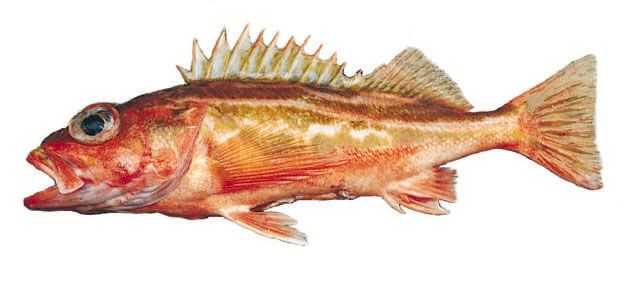Stripetail Rockfish

Species Details
Sebastes Saxicola
Sebastidae
Scorpaeniformes
Offshore, Deepwater, Continental Shelf, Continental Slopes
7 - 8 lbs.
6" - 16"
Stripetail Rockfish (Sebastes saxicola) Distribution
The Stripetail Rockfish is a small scaly saltwater fish with a thin body. Their color ranges from yellow-pink to red-pink. They also have dark-orange to brown vertical stripes along their body. As their name suggests, they also have dark-orange to green-brown streaks in their tail. Their dorsal fin has 13 spines and their anal fin has 3 spines. They have very large eyes for their body and have 8 head spines. This fish is related to the Quillback Rockfish.
Size and Diet
The stripetail rockfish’s size on average is 6 inches. The biggest stripetail rockfish is 16 inches. The stripetail rockfish is one of the poorly studied fish, but it is known that the females are often larger than the males. Its average and heaviest weight is currently unknown. The stripetail rockfish eats other benthic creatures. They feed on tiny creatures such as zooplankton, shrimps, copepods, and krill.
Interesting Facts About the Stripetail Rockfish
- This gamefish’s anus is interestingly located in between its pelvic fin and anal fin. Making it somewhat in the middle of the fish.
- Despite the size of this small fish, it has a long lifespan of up to 38 years.
- The small stripetail rockfish are also good fish bait if you want to catch some salmons.
- This species is often a by-catch of bottom-trawling. It currently has a low market value.
- Be careful when handling this fish because the spines do contain venom, they’re not lethal but it’s better to be safe.
How to Fish the Stripetail Rockfish
The stripetail rockfish is not a popular gamefish among anglers. It’s small and you need to fish deep to get this fish. Though if you are one of the anglers who would like to try catching this fish, you need to set your rig to hit the bottom. Try to look for sandy spots with depths of 80 feet or more. Look for the sandy bottom where they will most likely hide. Just drop cast your presentation and wait for a bite.
The recommended equipment to fish a stripetail rockfish. Make sure to use rods and lines that are sensitive so you can feel the bite of this small fish. Use 6- weight light-action rod of 7- to 8- feet in length. For your line, use a 10 to 30- pound test monofilament or fluorocarbon line. Use some sinkers to help you get to your preferred depth. A good weight for sinkers is around 10-12 ounces. Use small hook sizes between #6 to #2 and you can go up to 1/0 if you want to catch bigger ones.
Recommended lures are minnows, darts, and grubs. The baits that you can use are shrimps, worms, and sliced crabs.
Habitat and Distribution
The stripetail rockfish is primarily found in the coastal waters of Mexico. Their range is from the Eastern Pacific region. From the Gulf of Alaska down to Baja California, Mexico. Being bottom dwellers, they have a deep range from 30 feet up to 1800 feet, but their average depth is 80 feet deep. They are solitary creatures and are non-migratory. You can find them resting alone in the sandy bottoms of continental shelves and slopes.
The best fishing spots in the U.S. for the stripetail rockfish are mostly in California. You can try Point Loma, Palos Verdes, New Port Beach, Catalina Island, Long Beach, and Monterey Bay. In Alaska, a good spot for this fish is in Yakutat Bay.


